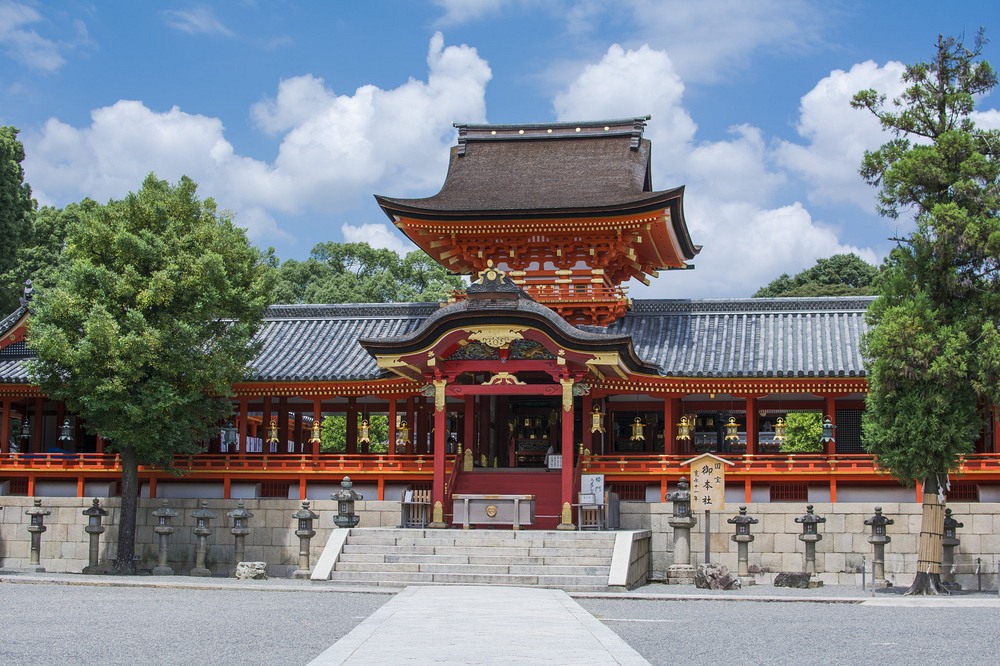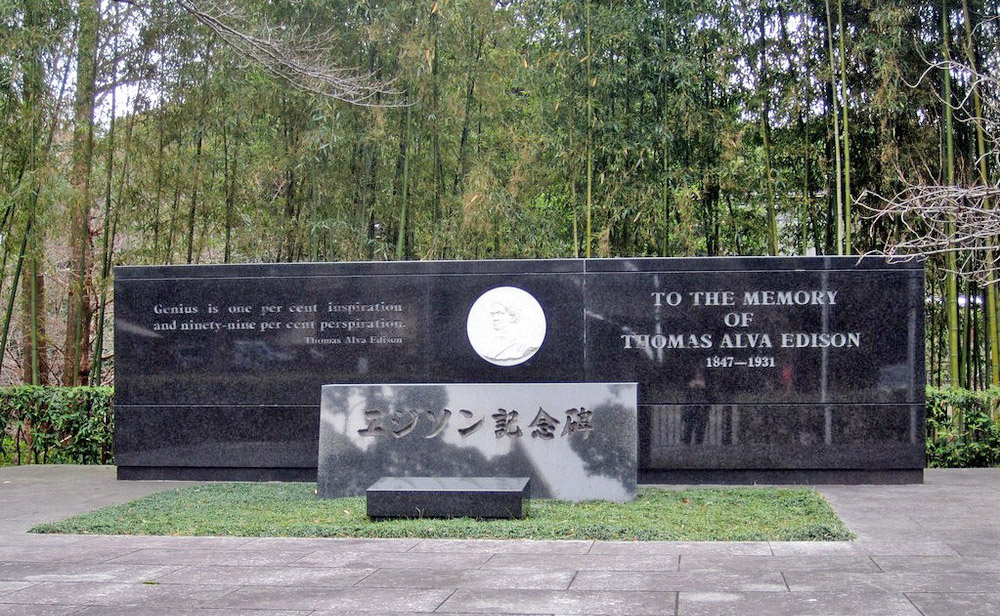Thomas Alva Edison's invention, or shall we say “perfection”, of the light bulb helped brighten up homes of people all across the world, but he is especially revered in Japan. Cleveland-based newspaper The Plain Dealer says Japanese people represent the largest percentage of visitors to Edison’s childhood home in Milan, Ohio.
Edison shares an unlikely connection with Japan. His admirers are at every corner of the country, but the relationship is especially deep with the citizens of Yawata City, in Kyoto Prefecture. There is a monument to Edison at the Iwashimizu Hachiman Shrine, and at the foot of the mountain where the shrine is located, there is a small shopping district called “Edison Street” with a bronze statue of him. Yawata City is also a sister city to Milan, where Edison was born, and since the early 1980s, many happy exchanges of gifts have been made between the people of both places.

The bamboo grove near Iwashimizu Hachimangu Shrine in Kyoto. Bamboo from this area was used to make filaments for the first light bulbs. Photo credit: mTaira/Shutterstock.com
Edison began experimenting with incandescent light bulbs in 1878. Incandescent lamps produce light by using electricity to heat a thin strip of material, called a filament, until it gets hot enough to glow. Many inventors had tried to perfect the incandescent lamp but the bulbs they built had extremely short lives. Others were expensive to make which made them impossible to apply on a large scale commercially. Still others drew large amounts of current that required excessively thick wires that again raised costs. Finding a good material for the filament was one major problem that Edison eventually overcame.
Edison realized that in order to keep current flow down he has to find a material that has high resistance. In order to prolong the life of the filament, the material should also be durable to heat. After testing thousands of materials, ranging from platinum to beard hair, Edison discovered that a filament made of carbon has the properties he was looking for. Edison decided to try a carbonized cotton thread filament. That bulb glowed for a record fourteen hours. Edison immediately applied for a patent, where he described that the carbon filament could be made from various materials such as “cotton and linen thread, wood splints, papers coiled in various ways”.
Edison continued to experiment with different organic materials which he carbonized in his laboratory. He contacted biologists and had them send different plant fibers from the tropics. He sent his workers to different places around the globe looking for the perfect material. Edison estimated that he “tested no fewer than 6,000 vegetable growths, and ransacked the world for the most suitable filament material.”

Carbon filament lamps. Photo credit: Ulfbastel/Wikimedia
One of Edison’s workers, William H. Moore, sent him samples from a bamboo grove growing near the Iwashimizu Hachiman Shrine in Kyoto in 1880. The species, Phyllostachys bambusoides, is native to China and Japan, where the hollow bamboo stems are used to make flutes and in numerous arts and crafts. The bamboo also made fine fishing rods. Edison himself had encountered one of these rods during a fishing trip to Wyoming, two years earlier, where he recalled examining a few threads from the bamboo fishing pole. It’s not clear whether Edison asked Moore to send him that particular species of bamboo, or Moore sent them to Edison of his own volition. In any case, Edison discovered that carbonized bamboo made excellent lamp filaments.
To make these filaments, pieces of a single bamboo plant was sliced lengthwise into extremely fine strips, and bent to their desired hairpin or looped shapes in order to fit into the bulb. They were then covered with powdered carbon and heated inside a furnace at an extremely high temperature for several hours before allowing them to cool. During this process, the bamboo strips turns from its initial cellulose structure to a pure carbon structure, ready to be mounted in the glass bulbs. However, the bamboo filament can only be as long as the distance between two joints of the bamboo cane. This restricted the length of the filament, and thus put a limit to how bright a carbon filament light bulb could be. Light bulbs made from carbonized bamboo filament did not burn much brighter than a candle, but they did burn significantly longer than any existing filament at that time. Some of the bulbs Edison and his team built burned for over 1,200 hours.

Iwashimizu Hachiman Shrine. Photo credit: Patrick Vierthaler/Flickr
Carbon filament became the dominant material in the manufacture of incandescent lamps until the development of the tungsten filament that lasted longer and gave brighter light than the carbon filament. The first tungsten filament lamps were made by a Hungarian company called Tungsram in 1904. By 1911, Edison’s company, General Electric, had switched to tungsten.
Edison died in 1931. Three years later, the Thomas Alva Edison Monument was built within the Iwashimizu Hachimangu’s precincts at the top of Mt. Otokoyama. When Madeleine Edison Sloane, Edison's daughter, visited Iwashimizu Hachimangu in 1964, she was said to have been deeply moved to see the memorial and remarked that she had never seen such a marvelous monument in the U.S.
Every year on the occasion of Edison’s birth and death anniversary, a light festival takes place at Iwashimizu Hachiman Shrine in which traditional bamboo lanterns are lit around the monument along with the playing of the American national anthem.

Photo credit: Katie/Flickr

Photo credit: Douglas Sprott/Flickr



Comments
Post a Comment